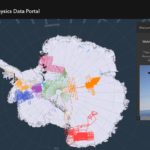Temporal variability of quasilinear pitch-angle diffusion
13 October, 2022 by Johnathan Ross, Nigel Meredith, Richard Horne, Sarah Glauert
Kinetic wave-particle interactions in Earth's outer radiation belt energize and scatter high-energy electrons, playing an important role in the dynamic variation of the extent and intensity of the outer belt.…Read more on Temporal variability of quasilinear pitch-angle diffusion
